Publié sur :
Publication Powerpoint Delépine - 2002
Voir la version PDF de cette publication :

Pelvic Ewing's sarcoma, 20 years experience
Delépine F, Delépine G, Sokolov T,
Nicole Delepine
Pelvic Ewing's sarcoma 20 years experience
Introduction
Despite the improved survival of patients with Ewing's sarcoma, pelvic location remains a bad prognostic factor.
This retrospective analysis tries to point out the reasons of such a situation, and to evaluate the impact of modern comprehensive approach on prognosis.
Patients
From 1977/2 to 1998/6, 53 patients have been treated by our group for Ewing's sarcoma of pelvic bones.
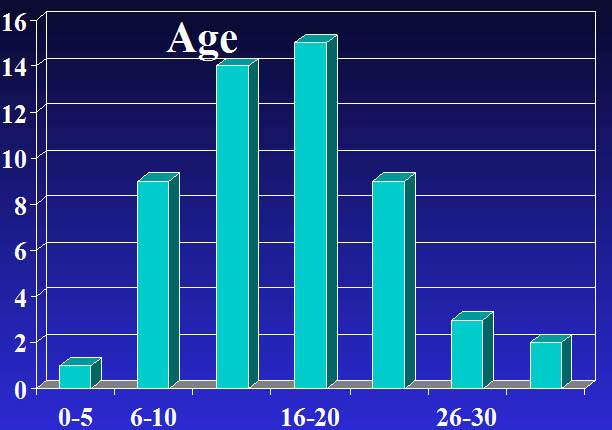
32 were males, 21 females aged 6 to 35 years (median 16.3).

Initial tumoral Volume
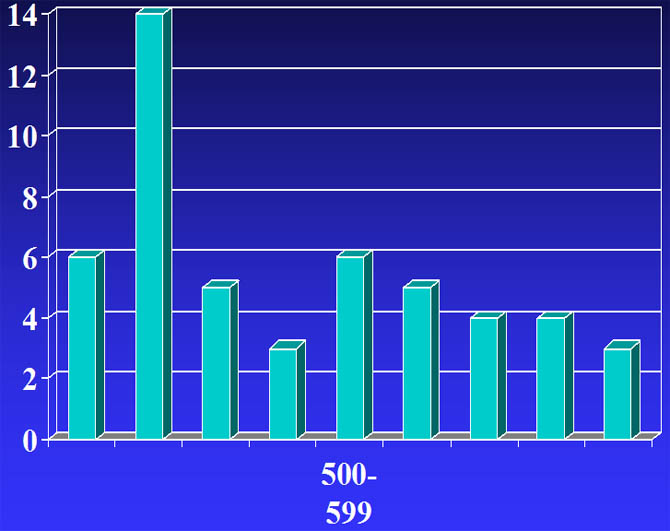
At first screening the tumoral volume assessed from CT or NMR averaged : 430 cc médian : 240cc
Initial staging
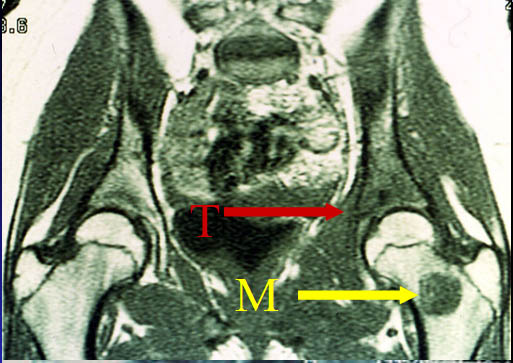
At first screening 15 patients had already metastases. Among them 7 with regional bone metastases on NMR.
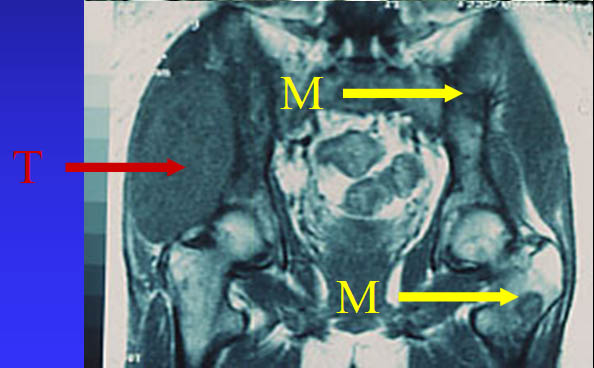
And 38 presented with localised disease.
Chemotherapyh
Treatment included chemotherapy for all patients according to the current protocol at the time of presentation : four drugs (Vincristine,Dactinomycin,Cyclophosphamide,Doxorubicin : V Ad CA, five drugs (VAd CA + ifosfamide) or six drugs association (IVAd CA + Etoposide or Cisplatinium).
Local treatment
-Used radiotherapy alone for 24 patients, surgery alone in 18 and a combination in 11.
-All patients have been followed up every 3 months for 2 years, every 6 months for 2 other years and then yearly.
Iliac Wing Wide resection
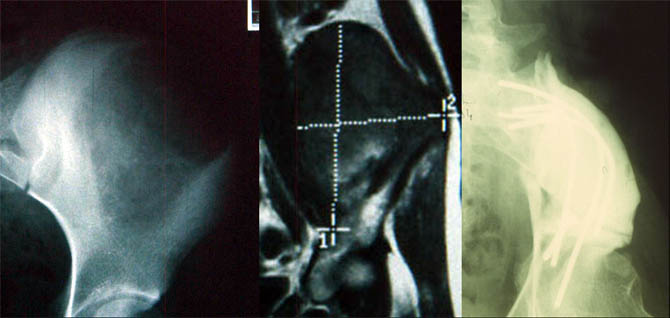
Ewing sarcoma in a girl aged 13 resection with composite acrylic reconstruction.
Sacroiliac Wide resection
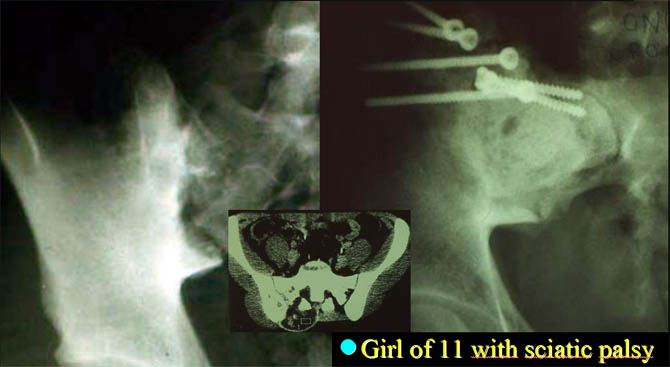
Girl of 11 with sciatic palsy.
Anterior ring Wall resection
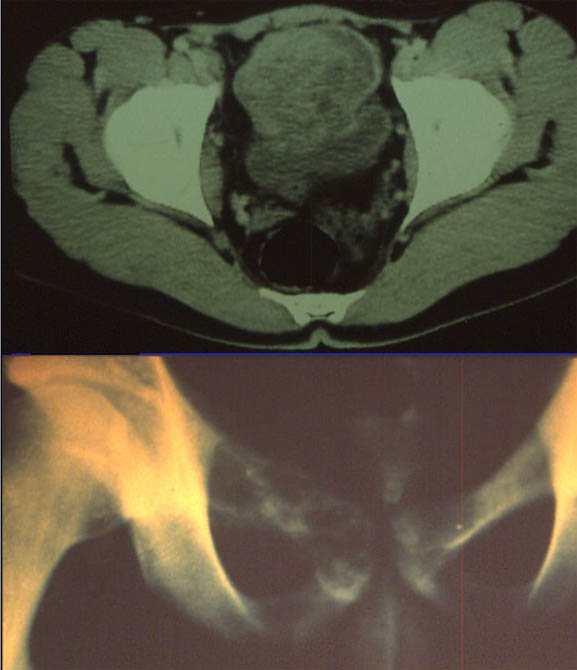
Boy of 13 with primary metastatic Ewing of anterior ring.Wide resection after long preoperative chemotherapy.
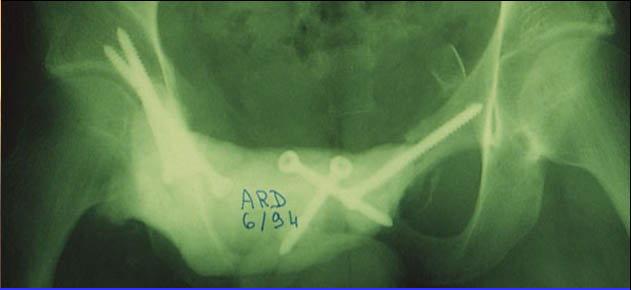
Periacetabular Wide Resection

Periacetabular Ewingwith metastase on L4.Resection of all lesions after bidrug induction therapy.
Results
With a median follow up of ten years, the 5 year actuarial event free survival rate for all patients is 31 % ; 13 % for primary metastatic patients and 37 % for patients seen with localised disease (p<0.001).
% Disease free Survival
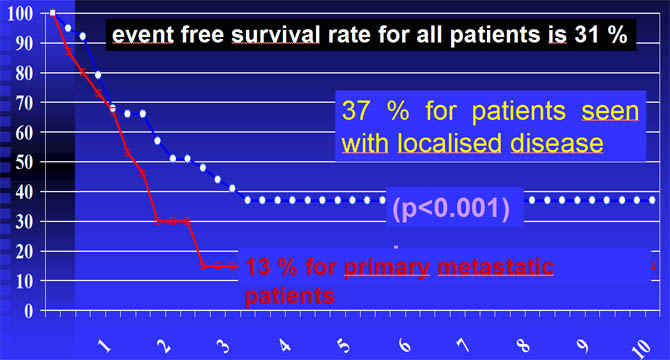
Pronostic factors
In primary localised tumor the major prognostic factors are the adequacy of surgical resection (p<0.01) and the high dose intensity of chemotherapy, particularly during the induction (p<0.05).
Influence of local treatment
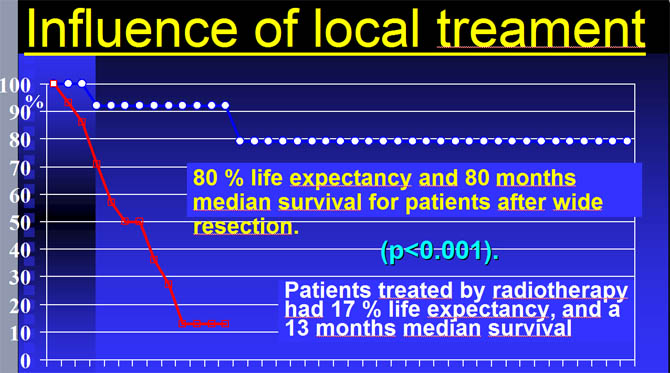
Survival after radiotherapy
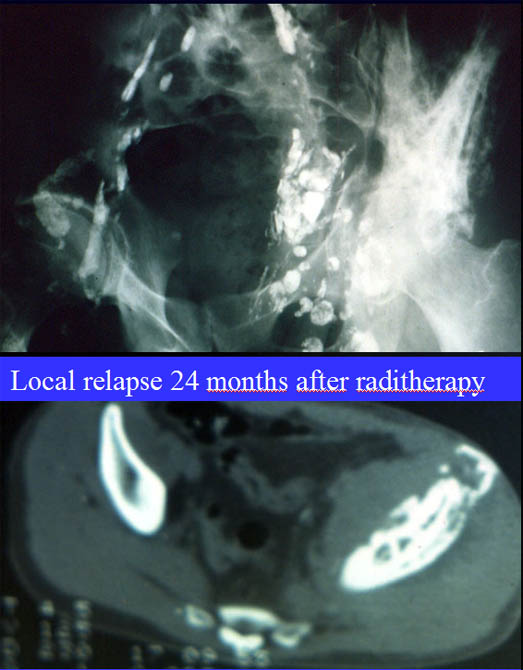
Patients treated with radiotherapy had a 44% risk of local relapse.
All subsequently died.
Influence of chemotherapy
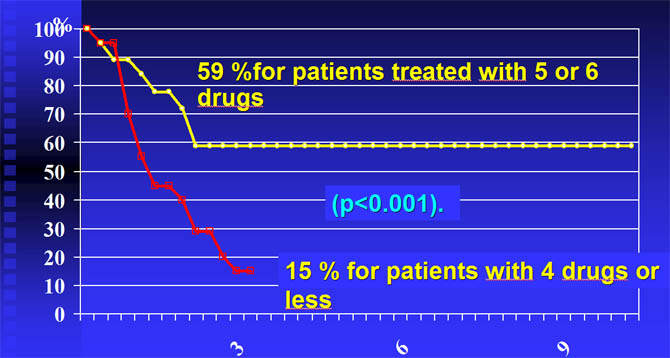
Conclusion
-Primary metastatic patients require new approach
-Early wide resection of the primary and adequate dose intensity of a 6 drugs chemotherapy give best results in pelvic Ewing's despite large tumoral volume or even incomplete response to preoperative chemotherapy.


